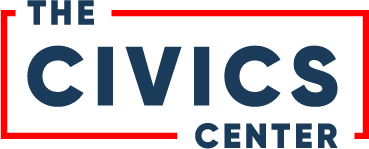Question for the high school class of 2019: Are you registered to vote?
Many high school students are hunkered down now, studying for finals, finishing their term papers and planning for graduation and their future. For many, that future seems frightening amid reports of school shootings, climate change and increasing political polarization. They feel they have little to no control over the future of their community, state and nation.
But they do: Almost all high school seniors graduating this spring can register to vote now. Here is more good news. In many parts of the country, 16- and 17-year-olds are eligible to either register or preregister.
This is probably a surprise to many high school students.
In 2017, the Pew Charitable Trusts reported that fewer than 10% of Americans they surveyed were asked to register to vote at school or as part of a class. Many school districts have no budget, no training, and no plan to promote voter registration. California allows students to preregister to vote at age 16, so that they will be automatically ready to vote after the 18th birthday. But only 14% of 16- and 17-year-olds are preregistered. Other states that offer preregistration have rates that hover around 30%, double California’s rate, but hardly an A+ showing. No wonder youth voting and civic engagement rates lag.
As a lawyer, a former law clerk to Supreme Court Justice Ruth Bader Ginsburg and a parent to two teenagers, I was dismayed to learn that these rates were so low. So I started a nonprofit organization, The Civics Center, to promote nonpartisan voter registration and preregistration in high schools.
What keeps young people from voting cannot be explained by stereotypes about teenage apathy. Real structural obstacles exist. Some are easy to overcome. Others are not. An easy step in overcoming the barriers is simply asking students to register to vote.
Better yet, students can ask each other. We know this works. In southern California, peer-to-peer voter registration drives have led to hundreds of registrations and preregistrations each in schools from Compton to San Clemente. The main ingredients for success are purpose and planning. Add clipboards, voter registration forms, posters, stickers and a candy bowl, and a drive is good to go.
More than 7 million young people will be graduating from high school over the next two years. The overwhelming majority of them will be eligible to vote in 2020.
We can all help create the social and cultural infrastructure to ensure that every high school graduate is a voter. We can learn our state laws and listen to what students care about. We can make sure our schools are including voter registration in year-end activities and that they will be helping students plan peer-to-peer voter registration drives next year.
We can volunteer our time to help. We can supply the stickers, clipboards and candy. When we speak with any of those 7 million young people who will be graduating this year and next, we can be the one to ask them: Are you registered to vote? And if they say no, the next question is easy: Can I help?
